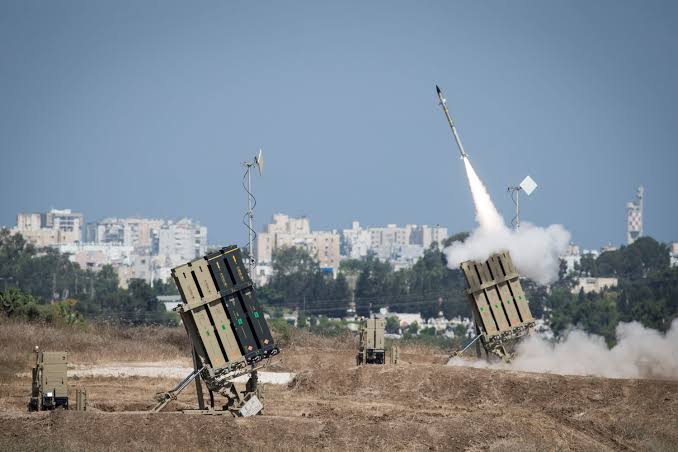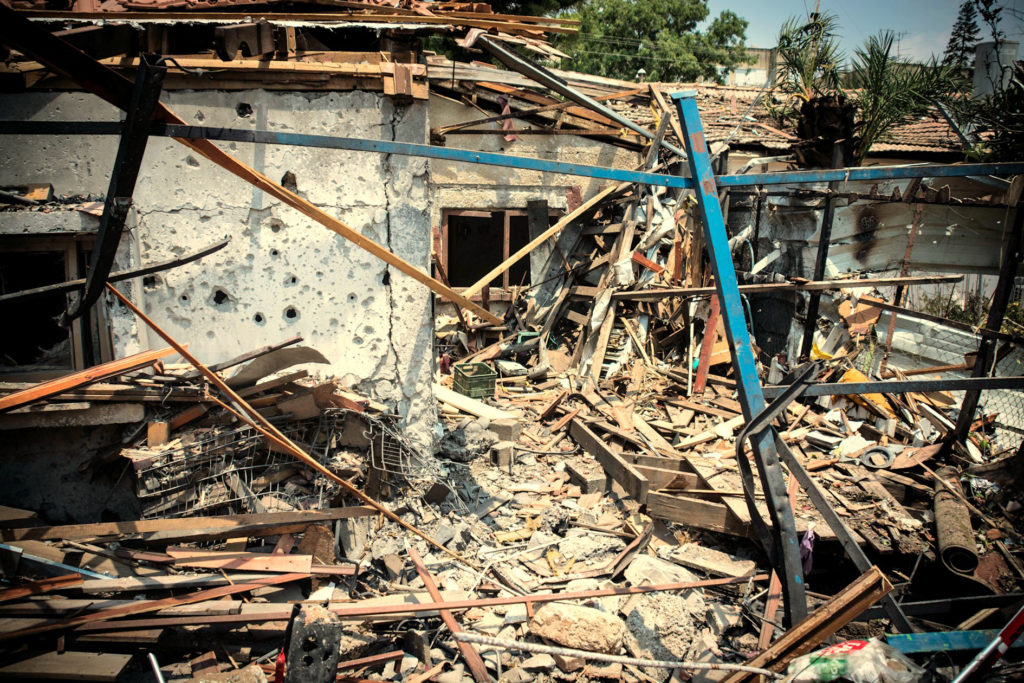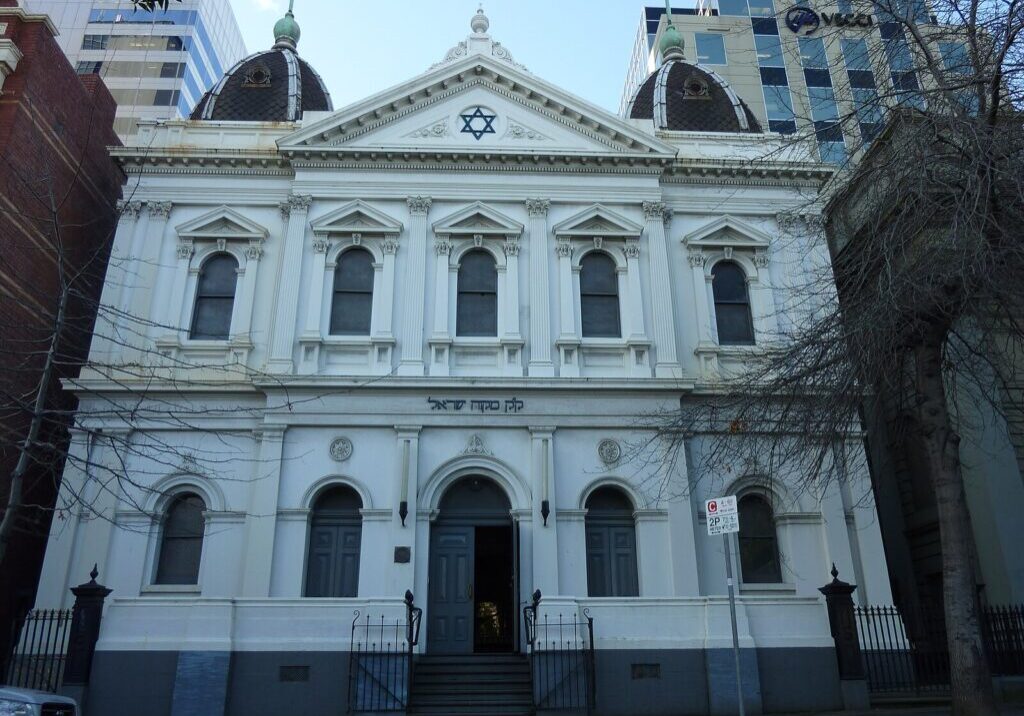Australia/Israel Review
Essay: Iron Dome assessed
Dec 5, 2019 | Jacob Nagel, Jonathan Schanzer

Is Israel’s groundbreaking missile defence system worth it?
The Israeli Iron Dome missile defence system continues to make headlines as it knocks Hamas and Palestinian Islamic Jihad rockets out of the sky. The system is the crucial lower tier of Israel’s layered missile defence system, which guards Israel’s skies from threats near and far. The David’s Sling system covers middle-layer threats, and the Arrow system defends against long-range projectiles.
Iron Dome has earned great praise across professional, political, military, and civilian circles. The US Army recently acquired two Iron Dome batteries as an interim solution to existing vulnerabilities, and may acquire more for the long term. The US Marine Corps has also expressed interest and recently conducted several successful tests in the United States.
Even among Israel’s foes, Iron Dome is widely recognised as a remarkable military innovation. But over time, certain potential disadvantages also have become a topic for debate. For one, Iron Dome’s efficacy in shooting down projectiles may encourage Israel’s enemies to increase their rocket launches to achieve their aims. And by granting time and space to Israeli officials to consider a proportional or surgical strike, Iron Dome can have the unintended consequence of potentially prolonging a conflict. In other words, the system raises the threshold for Israeli political leaders and military brass to launch a decisive operation, even as the volume of rocket provocations increases.
There is also a psychological warfare element. Israel’s enemies can repeatedly broadcast photos of their cadres firing rockets with relatively little response from the Israeli side. And when Israel does respond with lethal force, the international reaction is often harsh, with critics pointing to the efficacy of Iron Dome as a reason why Israel need not take decisive action against its enemies.
Despite these potential drawbacks, Iron Dome has successfully destroyed more than 1,500 incoming rockets, saving Israeli lives and protecting property and other assets. It is undeniably a crucial military asset, even as Israel works to address some of the unintended challenges associated with the system.
The Military Context
For two decades, Israel has faced a missile and rocket threat. Hamas has consistently fired projectiles toward Israel since the early 2000s. In 2006, during the Second Lebanon War, Hezbollah fired approximately 4,200 rockets into Israel, killing 53 and wounding hundreds more, damaging homes and businesses, and forcing from their homes approximately a quarter of a million residents in the country’s north. In 2014, Hamas fired 3,300 projectiles into Israel’s south and centre, even briefly shutting down Israel’s international airport.
With Iran’s help, both terrorist groups are now working to build a more formidable strike capability with an increased range and payload, able to blanket most of Israel. The current effort by Israel’s enemies to acquire precision-guided munitions, not to mention unmanned aerial vehicles (UAVs) and cruise missiles, has hastened Israel’s need to enhance its defence systems and solutions.
Israel has already mounted remarkable efforts on this front. In 2007, Israel made a strategic decision to address the problem. Four years later, a remarkable technological innovation was introduced to the battlefield: Iron Dome. In April 2011, the system intercepted its first short-range rocket and has since successfully intercepted more than 1,500 rockets. And Iron Dome has only improved in its accuracy and capabilities over time, exceeding the expectations of the technologists who invented the system.
However, the underlying Iranian proxy war against Israel only continues to intensify. Israel has been forced to develop new and innovative defensive weapons to counter new and dangerous threats. This dynamic runs the risk of forcing Israel to constantly react, without pursuing a strategy for victory. Indeed, it was Iron Dome’s impressive performance on the battlefield that prompted Iran and its proxies to develop advanced weapons and fuelled their ambition to develop precision-guided munitions. It also prompted them to launch more rockets in an effort to overwhelm the system.
The system’s advocates argue that the enemy’s technological development or quest for innovation has little to do with Iron Dome. Iran and its proxies were experimenting with various weapons technologies long before Iron Dome’s invention, they say. If anything, these advances are tied to the advent of GPS, smartphones and related technologies, which form the basis for precision-guided munitions as well.
Today, the world’s militaries – both those of states and of non-state actors – are locked in a technological arms race. Once a specific technology ripens and becomes both affordable and readily available, it is added to the arsenal.
In this context, Israel has a distinct advantage: Its technological superiority is unquestionable. This advantage stems not only from Israel’s independent capabilities, but also from its technological and economic alliance with the United States. But this edge is by no means guaranteed as lethal technology becomes less expensive and more accessible.
Initial Goals for Iron Dome
When Iron Dome was first conceived in 2005-2007 and rolled out in 2011, it was a prime example of Israel’s technological dominance. The system was designed primarily to save human lives. Iron Dome was also intended to protect military facilities and core national infrastructure. Finally, the system was designed to prevent rockets from striking homes and businesses in Israel.
Beyond these purposes, Iron Dome was created to afford Israel’s leadership the luxury of additional time to consider responses to rocket and missile threats. On the offensive side, the system was designed to give Israeli war planners the ability to conduct operations with less fear of retaliation.
In addition, Iron Dome was created in part to prevent the psychological demoralisation caused by enemy rocket attacks, which had grown particularly acute in the era of social media.
An Economic Assessment of Iron Dome
The cost-benefit analysis of Iron Dome has been the subject of significant debate. According to open sources, the cost of each interceptor is approximately US$100,000 (A$147,000). Israel’s enemies and even some of the system’s detractors in Israel assert that while rockets are not claiming lives or destroying property, the cost of intercepting them is taking a devastating economic toll on Israel.
However, a strong argument can be made that Iron Dome has yielded an exceptional return on investment. The cost of interception pales in comparison to the cost of damage wrought by an exploding rocket. Therefore, the overall cost of interception must be measured against the economic damage that was prevented. The table below provides some open-source data based on Israel’s 2006 conflict with Hezbollah (before Iron Dome’s deployment); its 2012 clash with Hamas (after Iron Dome was in place); and yet another war with Hamas in 2014 (again with the system in place).
| 2006 | 2012 | 2014 | |
| Rockets launched | 4,200 | 1,600 | 4,500 |
| Direct economic (property) damage
(millions of $A) |
204 | 24 | 38 |
| Indirect economic damage (loss of life)
(millions of $A, assuming $1.2 million per fatality) |
67.7 | 6.3 | 2.5 |
| Overall economic damage
(millions of $A) |
272 | 30.6 | 40.4 |
| Damage index average
(thousands of $A per rocket) |
64.8 | 19.1 | 9 |
| Cost of interceptors used
(millions of $A) |
0 | 63.9 | 115 |
| Overall economic damage with Iron Dome
(millions of $A) |
272.3 | 94.6 | 155.5 |
| Damage index with Iron Dome
average (thousands of $A per rocket) |
64.8 | 59.1 | 34.5 |
The overall damage without the Iron Dome was six to 10 times greater than that sustained when the system was deployed. Even after factoring in the cost of the interceptors, the benefits still outweigh the costs.
Israel’s National Security Strategy
Since the 1980s, Israel’s home front has become the scene of repeated conflict, due to the close proximity of both Hamas and Hezbollah. Israeli military planners are also acutely aware of Iran’s efforts to draw other proxy forces closer to Israel’s border in places like Syria. As a result, defending the homeland has become a major element of Israel’s updated National Security Strategy. The strategy has evolved to include four major pillars.
Deterrence – Israel seeks to leverage the mere threat of its powerful military capabilities to prevent attacks.
Early Warning – Israel seeks to gain an edge by using advanced military technologies or other means to determine as early as possible when its enemies will launch projectiles or carry out other hostile acts.
Active Defence – Interception and destruction forms the core of Israel’s active defence strategy.
Decisive Victory – When conflict is necessary, Israel seeks to ensure that victory is total and unquestioned.

Damage from the 2006 rockets attacks by Hezbollah has not been repeated in subsequent conflicts, thanks to Iron Dome
Assessment
Has Israel achieved success on these fronts? It appears to be a mixed bag. In the end, however, there should be no doubt that Iron Dome is a significant asset and bolsters Israel’s national security.
Deterrence – Even though it dominates the battlespace, one can argue Israel has paradoxically lost some deterrence. Iron Dome raises the threshold for starting a war, thus inviting more intense projectile launches. In other words, without Iron Dome, Israel’s enemies might settle for a few isolated barrages, knowing that anything more might elicit a decisive response from Israel. Instead, Israel’s enemies launch more and more rockets with the intention of overwhelming the system or at least portraying an image of victory. That said, if Hezbollah or Hamas seeks an all-out confrontation with Israel, they will fire thousands of rockets regardless of whether Israel deploys Iron Dome. Indeed, both groups did exactly that in 2006 (before Iron Dome’s invention) and 2014 (well after).
Deterrence is also undermined by the Israeli public, which has conveyed to decision-makers its aversion to mass casualties in a ground war. Thus, defence has taken on greater importance, with systems like Iron Dome allowing Israel to avoid or delay ground manoeuvres until all other options are exhausted.
Early Warning – Israel has certainly achieved an advantage in terms of early warning. The Iron Dome system quickly picks up every projectile fired at Israel and even determines its trajectory. This enables the system operators to decide whether to fire at the projectile or let it fall in open fields or other remote locations. The system also excels at providing Israeli citizens enough time to find shelter.
Active Defence – In the realm of active defence, Iron Dome certainly enables Israel to intercept the majority of rockets fired. The system also allows Israel to enjoy continuity of the operations to destroy enemy projectiles known to still be on the ground. By largely removing the threat of enemy rocket and missile strikes against Israeli military or residential areas, Israel has saved lives, protected key infrastructure, and prevented property damage.
Decisive Victory – Here, Israel has seen mixed results. To be sure, effective defence against rockets, cruise missiles and UAVs enables continuity of operations and air dominance. At the same time, however, the sense of security that Iron Dome grants Israeli officials often reduces their sense of urgency. This has led Israeli leaders to be indecisive when facing the question of whether to order ground manoeuvres or other means to achieve a decisive victory. Nevertheless, it is hard to dispute that Iron Dome has denied Israel’s enemies their objectives.
Economic Impact – According to Israeli Government sources, every day that Iron Dome helps to avert war saves approximately 240 million shekels (A$101 million) in military expenditure. Moreover, the system’s interceptor is significantly less costly than the potential damage that an exploding rocket could cause in a high-density residential area. While critics rightly note that Iron Dome is relatively expensive to produce and maintain, it still ranks among the world’s most affordable short-range missile defence systems. Moreover, when assessing the system’s cost as a percentage of the total defence budget and overall national budget, the expenditure is relatively small, while the cost of the damage prevented would be astronomical.
Political Factors – Iron Dome’s success has led to a drop in Israeli public support for ground manoeuvres. Critics argue that decision-makers have been deprived of the option of ordering a ground operation even if they prefer one. Critics also contend that because Iron Dome prevents Israeli casualties, Israel is denied the international legitimacy to respond with military force. Proponents of the system posit that Iron Dome relieves the pressure on Israeli decision-makers to respond immediately to aggression, allowing them greater latitude and freedom of action. One could also argue that Iron Dome helps prevent the Israeli Defence Forces from being cast as an aggressor – a narrative Israel often hears when its forces are deployed in a conflict. Thus, Iron Dome strengthens Israel’s image as an ethical and technologically sophisticated nation.
The Social Element – Iron Dome is a successful national brand. It contributes to Israel’s sense of national pride, resilience and ability to function despite attacks by hostile actors seeking its destruction. The system also conveys to citizens that they are important and worthy of the expenditure involved with its development and maintenance. On the other hand, there is a danger that the system’s success creates the illusion of safety, which is not guaranteed. The Israeli Government must continue to calibrate perception and reality.
The Strategic Element – Although rockets do not currently pose an existential threat to Israel, they do constitute a strategic and evolving one. More importantly, Israel is now in the middle of an arms race. Its enemies, committed to an agenda of annihilation, continue to innovate. Therefore, even with technology like Iron Dome and other missile defence systems in its arsenal, Israel must always remain one step ahead if it wishes to survive.
Even if one cannot quantitatively determine all the ways Iron Dome benefits Israel, the advantages are obvious. Iron Dome is a “tie-breaker” in skirmishes of any duration. The system frustrates Israel’s foes while enabling the Israeli military to carry out precision strikes at a time and place of its choosing.
Admittedly, Iron Dome has extended the decision-making process for Israel’s political leaders and has encouraged Israel’s enemies to fire rockets in greater numbers. Nevertheless, the system’s reported success rate, around 90%, is hard to argue with.
Looking Ahead
Iron Dome has given Israel an advantage. But this advantage is in no way guaranteed to last. Constant examination and adaptation of the system is necessary to maintain its superiority. Israeli decision-makers must also develop a cohesive strategy to ensure that the pillars of Israel’s national defence strategy are fulfilled.
Iron Dome will likely continue to serve as an important component in Israel’s multi-layered defence system. Together with the middle and upper layers (including David’s Sling and Arrow), Iron Dome makes Israel’s skies safer. These systems may also soon defend America’s skies or provide an umbrella over American troops on the battlefield. Continued cooperation between Israel and the United States will only enhance the edge these systems currently provide.
Jacob Nagel is a former head of Israel’s National Security Council and National Security Adviser to Israeli Prime Minister Binyamin Netanyahu. He is a visiting professor at the Technion Aerospace Engineering Faculty and a visiting fellow at the Foundation for Defense of Democracies (FDD). Jonathan Schanzer, a former terrorism finance analyst at the US Department of the Treasury, is Senior Vice President for research at FDD. © Foundation for Defense of Democracies (www.fdd.org), reprinted by permission, all rights reserved.
Tags: Israel






